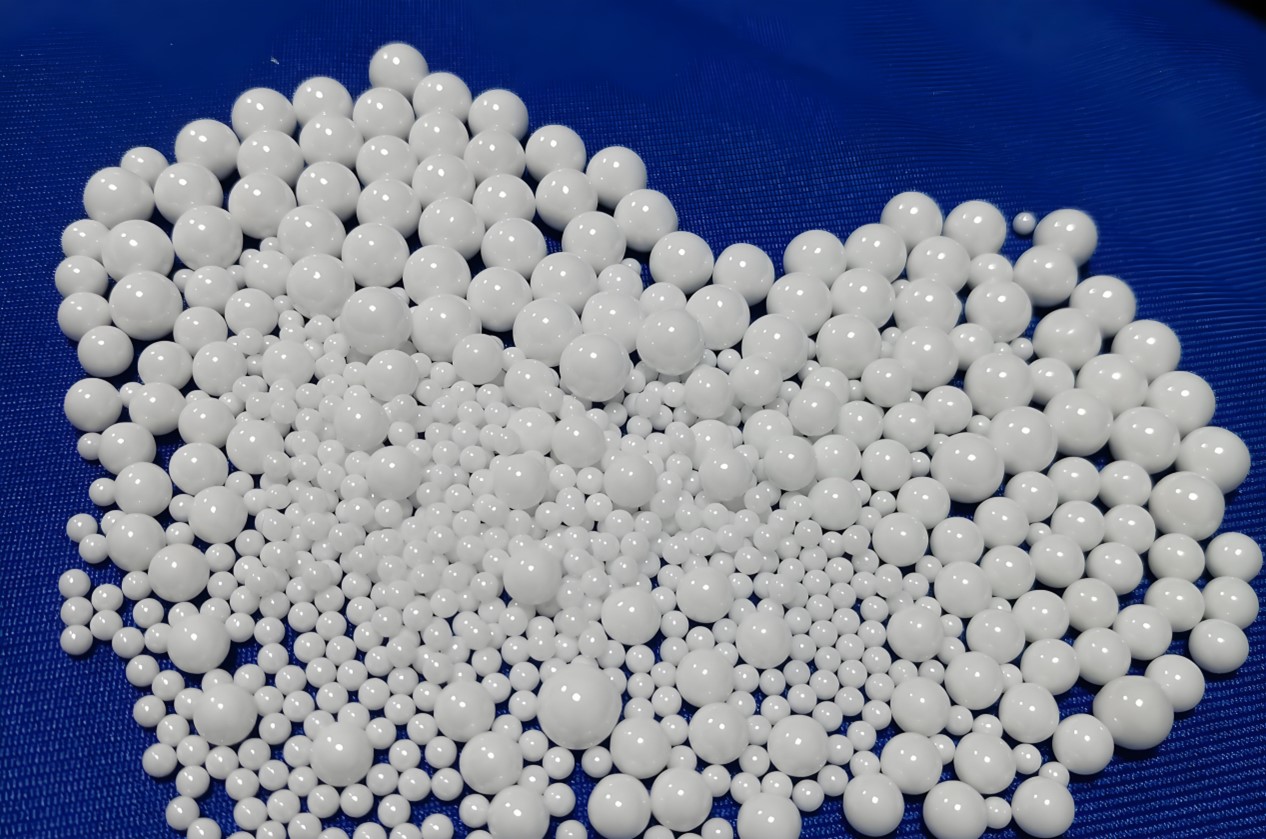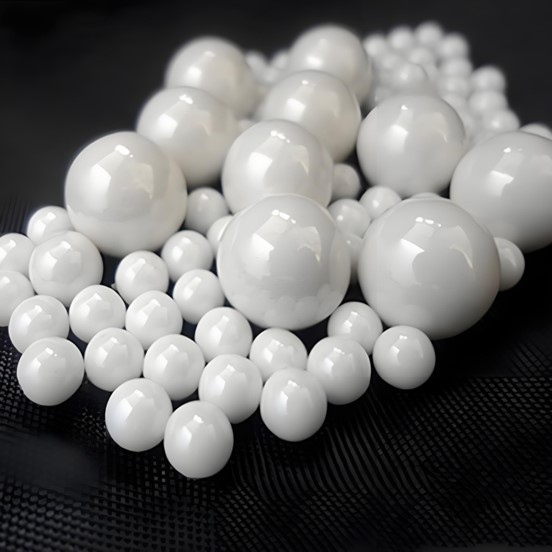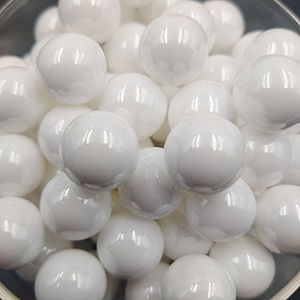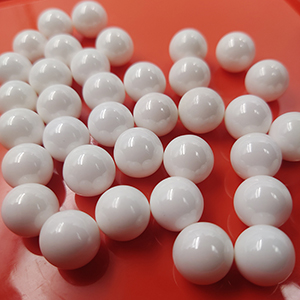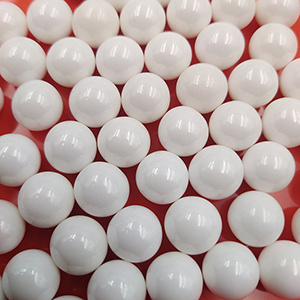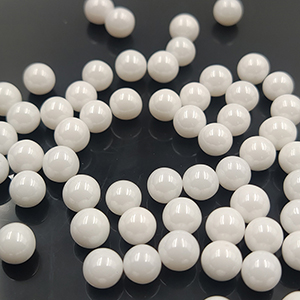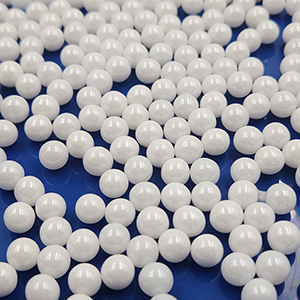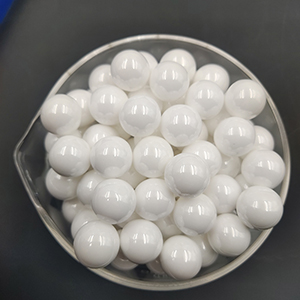Factors Affecting the High-Temperature Performance of Zirconia Beads
Zirconia Beads, renowned for their outstanding mechanical and chemical properties, have become indispensable in various high - temperature industrial applications, including thermal barrier coatings, high - temperature refractories, and ceramic processing. However, their high - temperature performance is not absolute but is intricately influenced by multiple factors. Understanding these determinants is crucial for optimizing the use of zirconia beads and ensuring the reliability of high - temperature processes.
- Chemical Composition and Stabilizers
The base composition of zirconia beads is zirconium dioxide (ZrO₂), but their high - temperature performance is significantly shaped by the addition of stabilizers. Zirconia exists in three main crystalline phases: monoclinic, tetragonal, and cubic. At room temperature, pure zirconia is in the monoclinic phase. As the temperature rises, it transforms into the tetragonal phase around 1170°C and then into the cubic phase at approximately 2370°C. These phase transitions are accompanied by volume changes, which can lead to cracking and material failure if not properly managed.
Common stabilizers, such as yttria (Y₂O₃), ceria (CeO₂), and calcium oxide (CaO), play a pivotal role. Yttria - stabilized zirconia (YSZ), for instance, is one of the most widely used types. The addition of yttria stabilizes the cubic or tetragonal phases over a broad temperature range, preventing the detrimental monoclinic - tetragonal phase transition. The amount of stabilizer also matters; a higher yttria content (e.g., 8 mol% YSZ) generally allows the beads to endure higher temperatures (up to 1600 - 1800°C) compared to lower - content variants (e.g., 3 mol% YSZ, which can withstand around 800 - 1000°C).
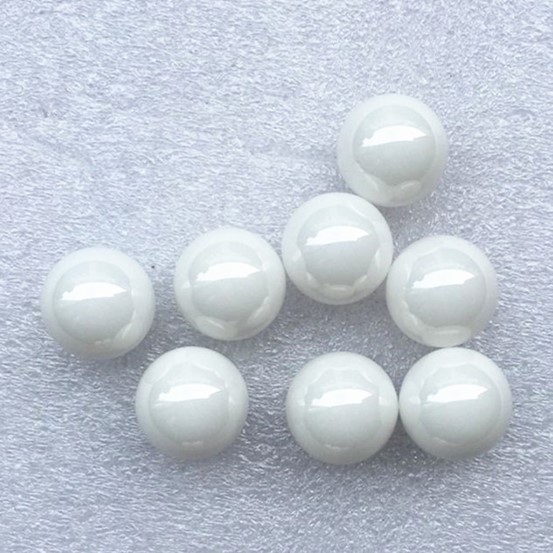
- Crystal Structure and Phase Stability
The inherent crystal structure of zirconia beads directly impacts their high - temperature stability. Cubic - phase - stabilized zirconia beads offer superior thermal stability compared to those with a higher proportion of monoclinic or tetragonal phases. The cubic structure remains more stable at elevated temperatures, reducing the risk of phase - induced volume changes and subsequent cracking.
During heating and cooling cycles, the rate of temperature change can also affect phase stability. Rapid temperature fluctuations can cause uneven phase transitions within the beads, leading to internal stress. For example, if a zirconia bead with an unstable phase composition is heated too quickly, the internal stresses generated by differential expansion and contraction of different phases can result in structural damage, thereby decreasing its high - temperature performance.
- Microstructure and Grain Size
The microstructure of zirconia beads, including grain size, porosity, and grain boundary characteristics, has a profound impact on their high - temperature behavior. Smaller grain sizes typically enhance the mechanical strength and thermal shock resistance of the beads. This is because smaller grains reduce the distance over which thermal stress can accumulate, minimizing the likelihood of crack propagation.
Porosity also plays a crucial role. High - porosity zirconia beads may have lower thermal conductivity, which can be beneficial for thermal insulation in some applications. However, excessive porosity weakens the mechanical integrity of the beads, making them more susceptible to damage at high temperatures under mechanical loads. Moreover, pores can act as nucleation sites for crack initiation, reducing the overall lifespan of the beads in high - temperature environments.
- Environmental Conditions
The surrounding environment in which zirconia beads operate can significantly affect their high - temperature performance. In oxidizing atmospheres, zirconia beads generally exhibit good stability due to the formation of a protective oxide layer on their surface. Conversely, in reducing atmospheres, certain components of the stabilizers or the zirconia itself may react, leading to degradation. For example, in the presence of hydrogen or carbon - containing reducing gases at high temperatures, yttria - stabilized zirconia may experience the reduction of yttrium compounds, altering its chemical composition and degrading its properties.
The presence of reactive gases or chemical species can also cause chemical corrosion. In industrial processes involving acidic or alkaline vapors, the surface of zirconia beads may undergo chemical reactions, gradually eroding the material and compromising its structural integrity.
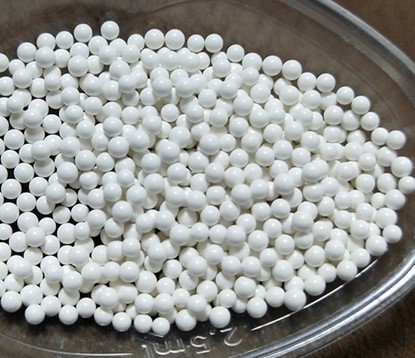
- Mechanical Loading and Stress
In addition to thermal effects, mechanical loading conditions interact with high - temperature exposure to influence the performance of zirconia beads. High - temperature environments can reduce the mechanical strength of the beads, making them more vulnerable to breakage under mechanical stress. For example, in high - temperature grinding applications, the combination of frictional forces and elevated temperatures can cause fatigue and micro - cracking in the beads, leading to premature failure.
The type of mechanical stress, whether it is compressive, tensile, or shear, also matters. Tensile stress, in particular, is more likely to initiate and propagate cracks in zirconia beads at high temperatures, as the material becomes more brittle under thermal conditions.
In conclusion, the high - temperature performance of zirconia beads is a complex function of their chemical composition, crystal structure, microstructure, environmental conditions, and mechanical loading. By carefully controlling these factors, manufacturers can optimize the design and production of zirconia beads to meet the demanding requirements of high - temperature applications. Future research in this area may focus on developing new stabilizer combinations, refining microstructural control techniques, and enhancing the understanding of the interaction between different influencing factors to further improve the performance and expand the application scope of zirconia beads.

